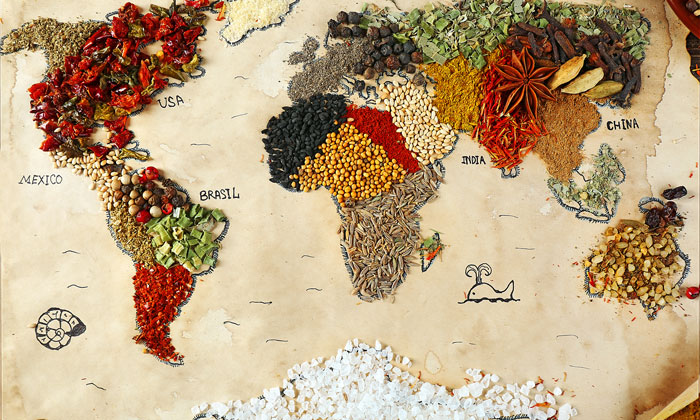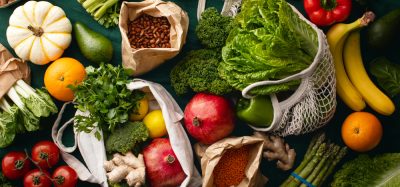Food legal diversity – harmonising across cultural divides?
- Like
- Digg
- Del
- Tumblr
- VKontakte
- Buffer
- Love This
- Odnoklassniki
- Meneame
- Blogger
- Amazon
- Yahoo Mail
- Gmail
- AOL
- Newsvine
- HackerNews
- Evernote
- MySpace
- Mail.ru
- Viadeo
- Line
- Comments
- Yummly
- SMS
- Viber
- Telegram
- Subscribe
- Skype
- Facebook Messenger
- Kakao
- LiveJournal
- Yammer
- Edgar
- Fintel
- Mix
- Instapaper
- Copy Link
Posted: 13 December 2017 | Professor Dr BMJ Van Der Meulen | Professor of Food Law | Wageningen University | No comments yet
Global differences in the manner and content of the regulation of food safety and other food-related issues stem from a wide variety of sources including history, culture, fear, protectionism and politics. Obviously these categories – if categories they are – are overlapping rather than mutually exclusive. Bernd van der Meulen, Wageningen University, explains more.


GLOBAL STANDARDS: Variations in how products are defined can create problems across different markets
Rules and regulations are often put in place as an attempt to solve a perceived problem. The problem that confronted the legislator at the time of legislation or the way the problem was perceived may explain the solutions that have been chosen. A legislator in India facing the challenge to achieve food security for over a billion people, for example, is likely to set different priorities to a legislator in the USA confronted with obesity at epidemic proportions or a legislator that has to deal with foodborne disease.
In Europe after the First and Second World War, regaining food security was a high priority but so was dealing with businesses that made profits out of scarcity by placing counterfeit products on the market. The instrument of choice was to define the genuine product in legislation. When European countries banded together to form what has become the European Union, their aim was to create a single market like the market in one state.
How does one create a market? A major obstacle was differing product definitions. Initially it was thought that harmonising product standards would overcome this obstacle. This led to a period of political negotiation on the definition of marmalade, chocolate, bread, coffee, tea, etc. With one stroke of the pen, the European Court of Justice solved the issue by ‘finding’ in the EEC Treaty the principle of mutual recognition. All national product standards are equal and compliance with any one of them gives access to the entire Common Market.
Unfortunately, disaster struck for the Common Market. The BSE crisis broke out in the mid-1990s. This crisis – largely a political one – provided the necessity but also the opportunity to regulate for food safety. The whole legal system was redesigned and rebuilt. The problem that inspired this redesign was an accident. No-one had foreseen, let alone wanted, something like BSE to happen.
This shows in the design. EU food law was made to prevent accidents from happening and to deal with their consequences. The ‘enemy’ that needed to be conquered consisted of micro-organisms and toxic substances. This is very different from the situation that prompted the reform of food law in China. The melamine crisis was caused by intentional criminal behaviour. The new food law in China, therefore, has primarily been designed to deal with evil people in the food chain.
The EU was reminded of criminal intent through the horsemeat scandal. It appeared that crime was a blind spot in the European design. Repairs to EU food law are currently being made to be able to deal with food fraud as well.
Also in the USA the Food Safety Modernization Act followed crisis type situations. Further analysis is likely to show that the American design can, at least partly, be explained by the type of problem that was on the table at the moment of legislation.
Horizontal and vertical approaches
How to regulate food related issues? Many countries used to approach issues product by product. Some still do. To protect consumers from fraud and from safety issues, definitions of foods are laid down in legislation. Such legislation is sometimes called ‘vertical’. Legal product definitions are also called ‘standards’. The Codex Alimentarius, for example, contains many product standards.
Legislation in Russia and China heavily relies on standards. In China, for example, products that are not covered by, and do not conform to, a standard, are not allowed on the market. For any innovative product, first a standard must be acquired. The USA, and in particular the EU, follow a more ‘horizontal’ approach in their legislation. This means that general requirements (called ‘general standards’ in the Codex) rather than product definitions are laid down in legislation. The composition of a product is the responsibility of the business and must be disclosed on the label. Somewhere in between the vertical and horizontal approaches are the ‘food books’ used in German-speaking countries (Austria, Germany and Switzerland). These books provide extensive descriptions of foods on the market. Following these descriptions is not mandatory as such. However, these books are considered to contain expert knowledge and a codification of consumer expectation. A product deviating from the book is considered to be misleading to the consumer, except when the deviation is clearly explained on the label.
Prohibition and abuse approaches
Another pair of approaches to regulating food are sometimes captured under the headings of ‘prohibition’ and ‘abuse’. The ‘prohibition principle’ applies where it is forbidden to place (certain categories of) foods on the market except when this has been explicitly authorised. The ‘abuse principle’ applies where it is allowed to place any food on the market, except where this is explicitly forbidden. The former applies positive lists, ie, lists indicating what is allowed, while the latter applies negative lists, ie, lists indicating what is forbidden. The expression ‘abuse’ is not really enlightening, but I will still use it here as it has become the generally accepted expression.2
As far as I know, all legal systems apply one mix or other of these approaches, placing some categories of foods under prohibition and leaving others free. The Codex Alimentarius and most countries apply, for example, a positive list when it comes to plant protection products. Only those products may be used that have explicitly been authorised and only residues of authorised products may be present on foods – up to the legal maximum limit.
Most countries apply an abuse approach to conventional foods. Foods that have a tradition of use can be freely used. If the legislature considers a product is no longer safe, it must explicitly say so. In the 1950s in the USA a different approach was chosen. From 1958 onwards, ‘anything added to food’ (so-called food additives) was prohibited, except when explicitly authorised by the FDA – or generally recognised as safe among experts qualified to make such assessment (GRAS). This example was followed in the Codex. The Codex, however, uses a more limited concept of food additive. In the Codex an additive is not ‘anything’ added to food, but only substances added to food to perform a technological function. The Codex example was followed in the EU. Over the course of time the additive concept was perceived in the EU as too narrow and other categories of foods have been introduced that may only be placed on the market after explicit authorisation. These categories include genetically modified organisms (GMOs) and (other) novel foods.
China is probably the most extreme in leaning towards the prohibition principle. Only foods that are covered by a standard may be placed on the market. All others are prohibited. In this respect, the setting of a standard resembles inclusion of a certain food in a positive list.
Enforcement
On top of differences in the content of legal and regulatory requirements, how these food legal requirements are implemented and enforced differs considerably between countries. Differences may result from priorities in controls and sanctions – from differences in focus on the problem, on the product, or on people perceived as perpetrators Levels of sanctions differ tremendously – from relatively low fines in some EU countries up to the death penalty in China. There are differences in the laboratory capacity to detect contamination and in emphasis of the letter of the law (‘no’ = zero) or on actual risks.
Harmonisation
Differences in food legal requirements and practices may be explained from the problem that the legislator attempted to solve, from a product specific or more general approach, from a desire to control types of food before they can enter the market, or from a preference to interfere only after problems have become apparent. All these differences turn trade in food into a sport that is played on many different fields and according to many different rules. You cannot play football with an American who wears body armour, puts on a helmet, grabs the ball with both hands and calls what you are doing ‘soccer’. Is it possible to achieve a level playing field?
With a view to facilitating international trade, improving the safety and quality of food and ensuring people’s health, at the international level the Codex Alimentarius and later also the World Trade Organization (WTO), attempt to contain political whims and replace them by science and harmonisation.
Since the early 1960s, the Codex Alimentarius Commission has drafted food standards to serve as templates for national legislation on food. Within the joint FAO/WHO food standards programme, the Joint FAO/WHO expert committees on Food Additives (JECFA), Microbiological Risk Assessment (JEMRA), and Pesticide Residues (JMPR) scientifically assess the safety of food additives, microorganisms and plant protection products. The scientific assessment is translated into limits distinguishing foods that are fit for human consumption from foods that are not fit for consumption.
Long lists of such limits as proposed by the Codex Alimentarius Commission are freely available on the internet. Unlike scholars, legislators are allowed – indeed encouraged – to copy. If you want to harmonise food law, just copy the Codex. From 1995 onwards, the WTO added a premium to copying from the Codex. In the WTO Agreement on the Application of Sanitary and Phytosanitary Measures (the SPS Agreement) it is acknowledged that WTO members have the right to protect the health of their people (and animals and plants) even if this would entail creating barriers to trade. But only in so far as this is necessary.
What is necessary? According to the SPS agreement, if a country follows the food safety standards from the Codex Alimentarius, the measure is assumed to be necessary. No further proof is required. Harmonise to Codex and you are good from a WTO perspective. If you want to do it differently, that may be OK as well, but scientific evidence would be required.
Meanwhile, the methodology of risk analysis has acquired recognition as the global golden standard for setting food safety standards. Risk analysis comprises scientific risk assessment, risk communication during the process with interested parties and decision making in risk management. In this methodology science, stakeholder involvement and politics come together. If the outcome is rational in face of the science input, it is probably WTO-compliant.
A case study
Despite consensus on the methodology, the outcomes of risk analysis are far from harmonious. The methodology cannot say which level of risk is acceptable. States should not discriminate in this respect, but apart from that they are free to choose their Adequate Level of Protection (ALOP). They should do this even if it would mean saving just two consumers in a billion at great cost for an exporting economy.3 Also the methodology says little on the kind of measures to be taken to limit the risk.
By way of example,4 let us consider how countries set limits for radioactive contamination of food. The scientific input comes from the International Commission on Radiological Protection (ICRP). This provides and updates studies into possible effects on human health of exposure to radioactivity through food. When setting their national standards, countries will take the latest findings into account. As not all countries regulate or update at the same time, the latest findings used may differ from country to country. The chosen tolerable level of exposure must somehow be translated into actual levels for actual food products. What is acceptable in one food may be influenced by the amount of other foods that may also be contaminated.
The EU made its calculations on the basis of the assumption that a maximum of 10% of the food supply may be contaminated. Japan, after the Fukoshima incident, calculated on the basis of the assumption that, at maximum, 100% of the food supply could be contaminated. As a consequence, to achieve the same level of protection, the maximum limit in Japan must be 10 times lower than in the EU. In principle, this is indeed the case. However, the EU requires that imports from Japan conform to the Japanese standards.
Many countries distinguish different levels for different foods. The bigger the contribution of a food to the diet, the lower the level. And also, the more vulnerable the consumer, the lower the level. Therefore, for infant formula, lower levels apply than for regular food. Not so in the USA. For the benefit of law enforcement, the USA has opted for one uniform maximum level for all foods. Obviously, this level has to be such that the more vulnerable consumers are also adequately protected.
All these examples are directly or indirectly based on international standards and directly or indirectly based on risk analysis. Yet, the situation is far from harmonised.
The private sector
Multinational food corporations use corporate standards to overcome differences in legislation. Based on comparative analysis of national legal requirements globally, as far as possible they set limits that comply with requirements in any jurisdiction where they are active.
Something similar is attempted collectively through private standards such as FSSC22000, IFS, BRC, SQF and GlobalGAP. Unfortunately, these private standards have diversified to the point where harmonisation among them is needed. Achieving this is the mission of the Global Food Safety Initiative (GFSI).
The Global Harmonization Initiative
A non-governmental organisation, the Global Harmonization Initiative (GHI) aims to contribute to global harmonisation of public food (safety) requirements by identifying and communicating scientific consensus on food safety issues. GHI is a network with ambassadors in most countries around the world. Members are independent from political or business interests. Through teaching and publication, GHI attempts, for example, to make available to legislators the basics of toxicology, for example, that toxicity is practically always dose-related. By consequence there will always be a lowest level of concern. Regulating below that level – as happens in the case of zero-tolerances – may politically seem energetic. In fact it is counterproductive as it creates unnecessary barriers to trade and unnecessary loss of food in a world that is already short on resources. To be able to go beyond the basics, GHI is preparing a study – from which the radioactivity example has been taken – to assess through global case studies on food safety limits, which factors contribute to differing outcomes from the risk analysis process when it is applied in different countries to same issues. If these differences are better understood, this may present opportunities for further harmonisation.
To stay with the radioactivity example: serious discussion is possible on the question if it is a good idea to have just one single limit for all foods as is chosen in the USA, or rather if emphasis should be on staple foods and infant formula. It is not beyond imagination that reasonable people – and at the end of the day, legislators are people – might concur on a common approach.











